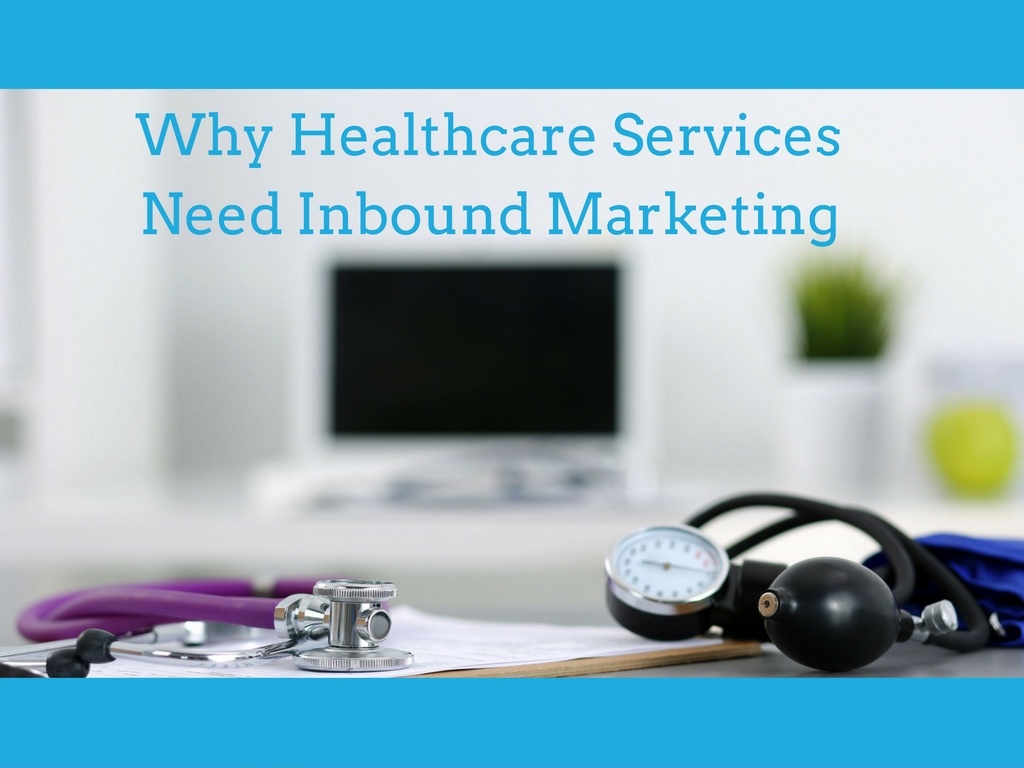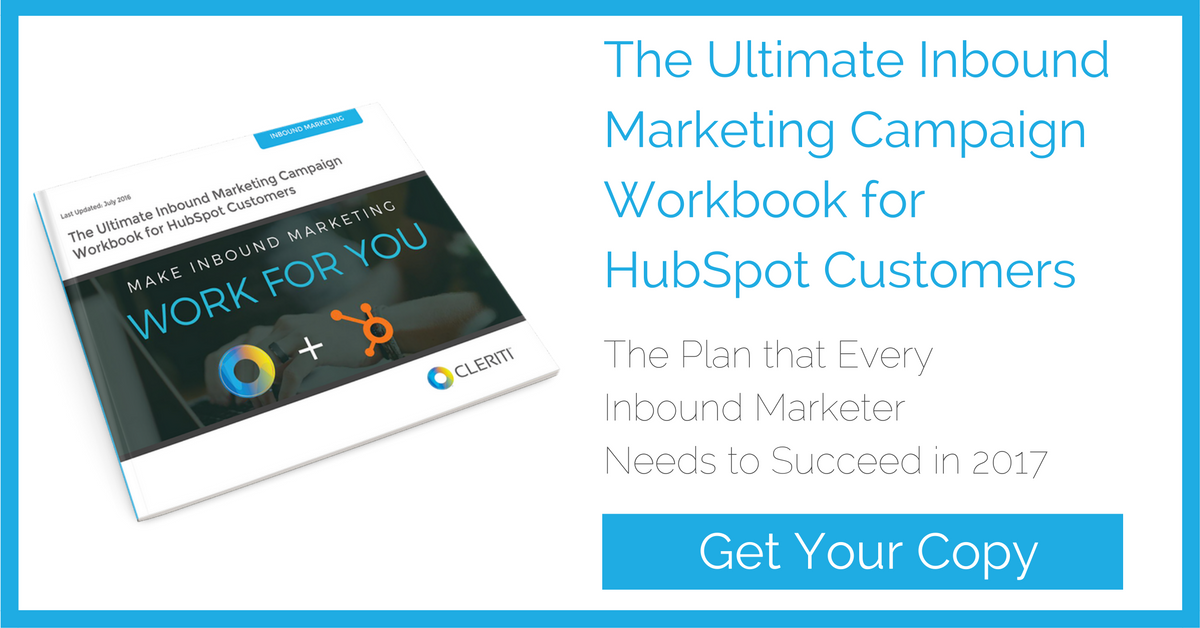- Dec 16, 2016
- By Emily Inman
- In Inbound Marketing
3 Reasons Healthcare Services Need Consistent Inbound Marketing Campaigns

Stringent regulations and an uncertain future can make healthcare a difficult industry to service — which means marketing can take a back seat to central business concerns like product development or customer service, relegated to demos at healthcare conferences and one off campaigns. And while those tactics can certainly get attention for your brand, it does mean you’re neglecting a critical aspect of your marketing: digital.
These days, it’s a given that, if you want to reach the largest cross-section of your audience, you need to be offline and online. Potential buyers, even leads you generate at conferences and trade shows, aren’t going to stop at this single contact. They’re going to do research. They’re going to try to find out, on their own time, how what you’re offering can fill a need within their organization. That means a single contact will search out with your company at many different times on various channels before contacting a salesperson. You need to be there to meet them.
But there’s more to creating an effective digital strategy than throwing money at Adwords or other paid promotions. Inbound marketing can help you find out where you need to be and what kind of content you need to be creating.
1. Inbound Marketing Is an Essential Part of Any Marketing Strategy
The first question to answer here is why run inbound marketing campaigns at all.
We’re very much aware that the rumors of traditional marketing’s death have been greatly exaggerated. Networking events are just as successful as they’ve always been. And consumers continue to respond to ads and marketing seen in magazines, newspapers, and direct mail, on television and billboards or heard on the radio.
While traditional marketing is far from dead, Inbound methodology helps create that strategy, putting the right mix of content on the right mix of channels. And when you implement an inbound marketing campaign, you don’t need to worry about pushing your efforts in front of the right audience, you bring potential customers to you.
Let’s take a look at a few stats and figures, compiled by inbound marketing pioneers Hubspot, that highlight this point:
- Google gets over 100 billion searches a month.
- 81% of shoppers conduct online research before making big purchases.
- 47% of buyers viewed 3-5 pieces of content before engaging with a sales rep.
- 1 in 10 blog posts are compounding, meaning organic search increases their traffic over time.
- 63% of Facebook and Twitter users say each platform serves as a source for news about events and issues outside the realm of friends and family.
- At least 61% of those investing a minimum of six hours per week in social media marketing saw improvements in search engine rankings.
- 86% of consumers would like to receive promotional emails from companies they do business with at least monthly, and 15% would like to get them daily.
- Marketers using automation software generate 2X the number of leads than those using blast email software and are perceived by their peers to be 2X as effective at communicating.
“But, Emily,” I hear you say, “these are consumer statistics. Our company sells to corporate clients.”
True. And your inbound marketing strategy as a B2B business will differ from typical B2C tactics, but it’s important to remember that your audience — the CFOs, CEOs, or other hospital executives you’re trying to reach — is more than just a series of job roles. They’re people, too. And they have media habits like every other American. If it does nothing else, inbound marketing helps reinforce this point and encourage you to treat your customers like the real people they are.
Now that we’ve established that it’s a smart idea to run inbound campaigns, let’s look at why it’s so critical that you stay consistent.
2. Inbound Requires Consistency to Pay Off
Unlike traditional marketing and advertising, where a campaign has a set time in which it is run and results are measured, inbound has a bit more stick-to-itiveness. Once it goes live, it stays live. Inbound marketing content is what we call evergreen. It continues to attract visitors and convert leads in the days, weeks, months, and even years after you’ve moved on to the next campaign.
At Cleriti, we get hits and submissions on blogs and offers we created 2 to 3 years ago. Hubspot, arguably the best inbound marketer in the business, receives 75% of its blog views and 90% of its blog conversions on old content.
While a given campaign can have an impact long after the campaign is over, it does take time for leads to convert into sales when you’re nurturing a prospect from step one of the Buyer’s Journey. Unless you have a post that goes viral, it takes time — sometimes even months or years — for content to gain traction through organic search.
If you give up halfway through, your old content will continue to convert, but a couple of things will happen:
- You’ll start to lose relevance. If you aren’t continuously serving up fresh, relevant content on your blog and social media channels, then you’re pretty much relying on search traffic for your website leads. Unfortunately, webcrawlers like fresh content as much as people do, and if you’re not regularly making updates that these bots can crawl and index, your search rankings are going to start slipping in favor of competitors who are.
- Your content may be taken down or you could lose access to it. This may, arguably, be a greater danger than a lack of fresh content. As long as your content still exists out there on the web somewhere, it is able to keep working for you. If you decide to stop your inbound efforts and scrap your blog or let it lapse, your host may choose to remove your content from the web or deny access to it. Alternatively, someone else may, depending on where you host, be able to buy your domain out from under you. If your content is taken down or you lose access to it, then it no longer does you any good. Even more worrying for businesses in healthcare is the idea that a domain associated with your company could be purchased and used to misrepresent your brand.
Simply put, consistent results take consistent effort.
3. Inbound Marketing Offers Better Insights and Analytics
The more frequently you publish new content, create new offers and engage with followers on social media platforms, the more data you have to glean insights from.
While it’s certainly helpful to know things like your bounce rate (what percentage of visitors exited out of your website almost immediately after reaching it), how many unique website visitors you’ve had in a given period of time, or how long a visitor spent on your site, inbound marketing reaches beyond your website, so, too, will your analytic capabilities.
Inbound marketing analytics looks deeper than top level website analytics, keying in on:
- How each marketing channel — social media, email, blogging, digital ads, etc — is performing. Your inbound analytics can show, not just how many people visited your site, but where they came from (search, social, ads, direct) and which channels offer the greatest sources of traffic. If you consistently implement inbound campaigns, you’re able to compare data against historical numbers and across categories to discover what kind of content on which channels offers the best conversion opportunities. This allows you to direct your efforts to those areas where they will be most effective.
- How individual visitors have interacted with your company. Inbound analytics allow you to track each action a prospect has taken — what emails they have opened, what blogs they have read, the offers they’ve downloaded — after they have converted a single time. As time goes on, and you keep creating new content for leads to interact with, you are able to map out a conversion path you can implement with other visitors, nurturing more qualified leads through your sales process.
“Using marketing analytics,” writes Hubspotter Elissa Hudson, “allows marketers to identify how each of their marketing initiatives (e.g., social media vs. blogging vs. email marketing, etc.) stack up against one another, determine the true ROI of their activities, and understand how well they're achieving their business goals.”
Inbound Helps You Meet and Convert Prospects Where They’re Looking for You
Incorporating inbound marketing into your overall marketing strategy helps you extend your reach beyond the conference. Creating and implementing consistent campaigns gives you the tools you need to bring your contacts and leads to your site, track their interactions with your brand, and move them through your sales cycle — and give you the data you need to replicate the process time and time again.





